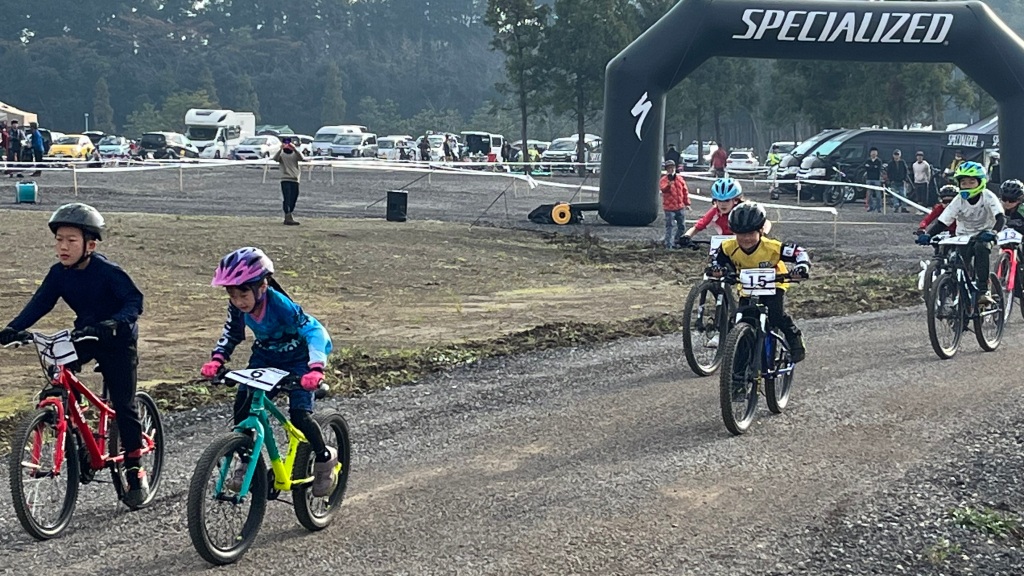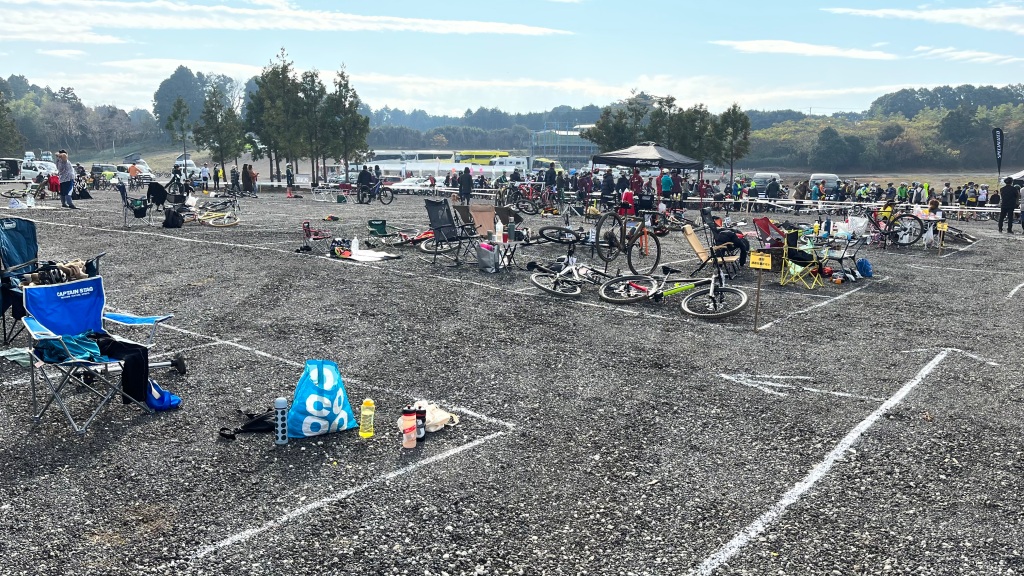I’ve been wanting to do a cyclocross for a couple of years since hearing about the Shonan Cyclocross series which takes place over the winter months. It seemed like a good chance to race close to home in the triathlon off-season. My interest increased exponentially after discovering that GCN+ covers all the major races in Belgium and Holland where cyclocross is huge. It is hard not to get addicted to these races with epic duals between the top riders batting it out on 3-kilometre courses full of mud, sand, ice, snow, brutal slopes, slippery steps, and other devious obstacles. Cycling meets Jeux sans frontières.
The only thing holding me back was the bike, or my lack of one. I needed a road bike which takes 33 mm tyres, which is the maximum allowed for cyclocross. I failed to find something secondhand, but finally discovered the entry-level Canyon Endurace. This is not a cyclocross bike, but rather designed for long, comfortable road rides. It would be good for bike packing, long rides, and commuting, and with clearance for 35 mm tyres, it would get me started with cyclocross. I opted for the aluminium Endurace 7 with Shimano 105 which, at ¥199,000 is exceptional value. It was also the only vaguely suitable bike in stock.
I was also lucky that friend Kimm, who lives nearby, had recently got into cyclocross and he gave me a lot of advice. He suggested I enter the lowest rank of men’s elite, ME4, as he thought the over 60s masters’ category, MM60, wouldn’t challenge me. He also gave me lots of advice for race day, including arriving early, making full use of course practice time, and gear choice. Most important was tyre pressure. With 33 mm tyres, I would expect to run them at 4-5 bar (58-73 psi) on smooth roads, but cyclocross is very different. Pros run tubular tyres lower than 20 psi which means they are almost riding on the rims. They also have pit crews ready with spare wheels when they get a puncture. For my tubeless tyres, Kimm recommended 1.7 or 1.8 bar (25-26 psi) which seems incredibly soft on a road bike, but it means the tyres spread out and give you more grip.
In a normal world, I would have practised cyclocross before my first race. However, I didn’t convert my new bike from clinchers to tubeless until a few days before the race, and by then it was too late to find somewhere for practice. I also had problems setting up the tubeless tyres. I had mistakenly ordered tubeless rim tape with the same width as the inner rim width. I tried installing this but tyres were leaky. I then discovered you are supposed to order rim tape 2 or 3 mm wider than the rims, so I had to order some more tape. With lots of sealant in the tyres, I managed to get them to hold pressure for a while, so I went out for a ride in my neighbourhood. Two ks from home, I hit some glass and tore a long gash in the brand new rear tyre. I walked home and ordered a new tyre. All this meant that I arrived at Chiba Cyclocross having never ridden my new bike off road. The practice lap would be important.
I arrived at the race venue, Chiba Port Park, and joined the one-kilometre queue waiting for the car park to open at 6 a.m. I managed to get in before the barrier was closed, and immediately met Kimm who was setting up his two bikes. He races ME1 with the pros, so having a spare bike in the pits was essential. I had taken an old mountain bike to put in the pits, as you can use any bike in ME4. We set up our gear next to the course, registered, and got ourselves ready for the practice period.
The course winds around the edge of the marine park, taking in a small hillock, some woods, and most important, a sandy grass area and beach. There was a heavy frost which made the many sharp twists and turns feel treacherous, but that didn’t stop the better riders (nearly everyone) flying past me as I gingerly picked my way around the course. The sand sections were much easier than I had expected, probably due to my mountain biking experience. You just need to let the bike go where it wants to go and push out steady power. I ended up doing three laps which was only one less than I would do in the race.
Ours was the first race of the day. Due to the large number of riders, our category was divided into ME4A and ME4B. I was in ME4A which had 69 riders. My race number was 68 meaning I was right at the back of the start grid, which was 8 riders wide. As this was all a new experience, I was happy to be tucked safely at the back. Not for long. Within a few moments of the start, we were on the first steep climb which caused an immediate compression of the field. Then we were descending before turning into the second climb. I had no idea how much grip you get on narrow, spongy tyres, so I took the first lap carefully. Still, I had started to pass people, and inevitably the adrenaline was flowing thick and fast through my veins. I hit the sand determined to stay upright, as people fell left and right.

In cyclocross, there is a target time for each category, and the organisers decide the total number of laps after the fastest person had completed two laps. Our race was 30 minutes, which turned out to be just 4 laps. Those 30 minutes flashed by as I tried to improve my line on each bend and obstacle, and work out how fast I could go. It is important to carry speed through each turn as momentum is of course a cyclist’s best friend. Doing that without overcooking a corner is they key. Overall, I was very happy with my first race. Apart from the joy of riding around and around in circles on a grassy, sandy course, I had no problems and made no big mistakes. My first lap was inevitably the slowest, but after that I was very consistent:
Lap 1 – 7:13 / Lap 2 – 7:07 / Lap 3 – 7:01 / Lap 4 – 7:00
My main weakness is, well, weakness. I just don’t have the power needed to accelerate fast out of each bend or obstacle. Once I get up to speed, I can hold it, but that is not very useful in cyclocross which consists of repeated short efforts. I need to change my training and build explosive power. The good thing is I am still doing well for my age. I would have won the MM60 category, so Kimm was right that I should enter elite if I want a challenge. Next race, I will be further up the grid, and I will know more about what to expect.

Kimm’s ME1 race was not until 13:55, five hours after my race finished. I had a book and a beach chair, so I spent much of the time down by the sand section reading and watching the other races. At 13:55, fifty very fast looking riders lined up for the start. The front line was made up of pros; Kimm was a few rows back looking very focused. They started at about twice the speed of our race and kept it up for an hour. The winner, Hijiri Oda, was in a class of his own. He powered around the course in superman fashion. Kimm finished in an impressive 26th place.
Cyclocross is really suited to Japan where race organisers have to battle against bureaucrat antipathy and general disinterest in cycle racing. Mountain bike races require mountain paths, which puts organisers up against hikers, multiple landowners, and local councils. Road races require police approval and a thousand petty permissions. Gravel races need long, connected stretches of flatish gravel roads which just don’t exist. All cyclocross needs is a small enclosed space and a single supportive owner or authority. As a result, it is a rather enclosed world. I barely knew there was a Japanese cyclocross scene, and I guess most people have not heard of it. Many people start off on the road, but after one or two falls on very hard asphalt, they find their way into cyclocross. Although falls are possible, the speeds are mostly low and the surface soft. My next task is to persuade other triathletes to put 33 mm tyres on a road bike and try this hidden sport.





















